 The greed and wealth for tin led to fierce rivalries and claim disputes. The
Chinese miners soon organised themselves into clans and warring gangs called
"secret societies." Without a centralised authority, keeping peace and order
in the mining areas was nearly impossible.
The greed and wealth for tin led to fierce rivalries and claim disputes. The
Chinese miners soon organised themselves into clans and warring gangs called
"secret societies." Without a centralised authority, keeping peace and order
in the mining areas was nearly impossible.
In 1868, needing a solution to the chaos, the headmen of the local clans
elected a man named Yap Ah Loy as "Kapitan China," or leader of the Chinese
community.
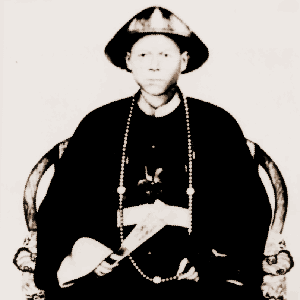 Considered as the founding father of Kuala Lumpur, Yap Ah Loy
with the support of the local sultan, built prisons and quelched revolts,
quickly establishing an infamous reign over the entire Kuala Lumpur mining
area. Kuala Lumpur was made capital of Selangor in 1880, mainly due to Kapitan Yap's success.
Considered as the founding father of Kuala Lumpur, Yap Ah Loy
with the support of the local sultan, built prisons and quelched revolts,
quickly establishing an infamous reign over the entire Kuala Lumpur mining
area. Kuala Lumpur was made capital of Selangor in 1880, mainly due to Kapitan Yap's success.
Loy had barely established control, however, when the Malay Civil War broke
out with local sultans fighting for the throne of Perak. KL being swept up
in the conflict, was burnt to the ground in 1881
The merchants of the Straits Settlements, concerned that the war would ruin
their prosperity, asked Britain to intervene. London sent in a new
territorial governor, Andrew Clarke, to appraise the situation.
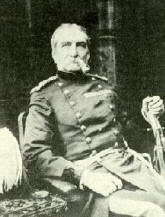 Clarke
gathered the feuding princes aboard his ship off the island of Pangkor, and
convinced them to sign a document known as the 'Pangkor Agreement'. The
Agreement ended the war, established a new Sultan of Perak, and most
significantly, called for the presence of a British Resident "who must be
asked and acted upon on all questions other than those touching Malay
religion and custom.
Clarke
gathered the feuding princes aboard his ship off the island of Pangkor, and
convinced them to sign a document known as the 'Pangkor Agreement'. The
Agreement ended the war, established a new Sultan of Perak, and most
significantly, called for the presence of a British Resident "who must be
asked and acted upon on all questions other than those touching Malay
religion and custom.
With Kapitan Yap's able leadership, that Kuala Lumpur became Selangor's
biggest city. He rebuilt Kuala Lumpur, which was devastated by the Civil War
and repopulated it with Chinese miners from elsewhere in Selangor. He also
encouraged Malay farmers to settle near Kuala Lumpur in order to have a
steady and accessible source of food.
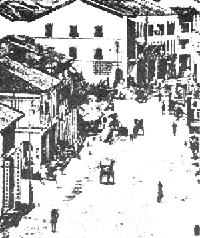 When the Federated Malay States were incorporated with Frank Swettenham in
charge in 1896, Kuala Lumpur was made the capital.
When the Federated Malay States were incorporated with Frank Swettenham in
charge in 1896, Kuala Lumpur was made the capital.
Most of central KL has
grown without any central planning whatsoever, so the streets in the older
parts of town are extremely narrow, winding and congested. The architecture
in this section is a unique colonial type, a hybrid of European and Chinese
forms.
World War II saw Kuala Lumpur occupied by Japanese from January 11, 1942 to
August 15, 1945. In a period, called "3 years and 8 months", all English and
Chinese schools were ordered to close down and every morning in schools,
Kimigayo (the Japanese National Anthem) had to be sung to show loyalty to
the Japanese Emperor.
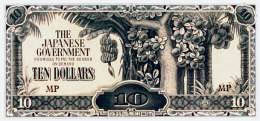
The Japanese Military Yen or commonly known as Banana Notes were
introduced. The currency issued without reserves and over printing led to
hyper-inflation and food rationing became the norm of daily lives.
After the fall of Japanese, the British returned to Kuala Lumpur. In 1957,
exactly 100 years since the founding of the city, Kuala Lumpur gained
historical significance again when the first Malayan flag was raised on the
grounds of the cricket field, in Merdeka Square, to mark the country's
independence from British rule.
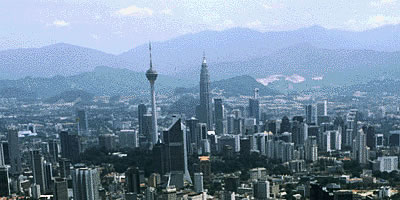 Kuala Lumpur came of age in 1974, when it was formally detached from its
mother state of Selangor and made into a unit of its own called the Federal
Territory.
Kuala Lumpur came of age in 1974, when it was formally detached from its
mother state of Selangor and made into a unit of its own called the Federal
Territory.
Today, Kuala Lumpur is the federal capital and most populous city in
Malaysia covering an area of 243 square km (94 sq mi) with an estimated
population of 1.6 million.
KL, as it is almost always called, is modern and fast moving city, a
thriving metropolis that leads the nation's fast paced development.



 The greed and wealth for tin led to fierce rivalries and claim disputes. The
Chinese miners soon organised themselves into clans and warring gangs called
"secret societies." Without a centralised authority, keeping peace and order
in the mining areas was nearly impossible.
The greed and wealth for tin led to fierce rivalries and claim disputes. The
Chinese miners soon organised themselves into clans and warring gangs called
"secret societies." Without a centralised authority, keeping peace and order
in the mining areas was nearly impossible. Considered as the founding father of Kuala Lumpur, Yap Ah Loy
with the support of the local sultan, built prisons and quelched revolts,
quickly establishing an infamous reign over the entire Kuala Lumpur mining
area. Kuala Lumpur was made capital of Selangor in 1880, mainly due to Kapitan Yap's success.
Considered as the founding father of Kuala Lumpur, Yap Ah Loy
with the support of the local sultan, built prisons and quelched revolts,
quickly establishing an infamous reign over the entire Kuala Lumpur mining
area. Kuala Lumpur was made capital of Selangor in 1880, mainly due to Kapitan Yap's success.
 Clarke
gathered the feuding princes aboard his ship off the island of Pangkor, and
convinced them to sign a document known as the 'Pangkor Agreement'. The
Agreement ended the war, established a new Sultan of Perak, and most
significantly, called for the presence of a British Resident "who must be
asked and acted upon on all questions other than those touching Malay
religion and custom.
Clarke
gathered the feuding princes aboard his ship off the island of Pangkor, and
convinced them to sign a document known as the 'Pangkor Agreement'. The
Agreement ended the war, established a new Sultan of Perak, and most
significantly, called for the presence of a British Resident "who must be
asked and acted upon on all questions other than those touching Malay
religion and custom. When the Federated Malay States were incorporated with Frank Swettenham in
charge in 1896, Kuala Lumpur was made the capital.
When the Federated Malay States were incorporated with Frank Swettenham in
charge in 1896, Kuala Lumpur was made the capital.

 Kuala Lumpur came of age in 1974, when it was formally detached from its
mother state of Selangor and made into a unit of its own called the Federal
Territory.
Kuala Lumpur came of age in 1974, when it was formally detached from its
mother state of Selangor and made into a unit of its own called the Federal
Territory.